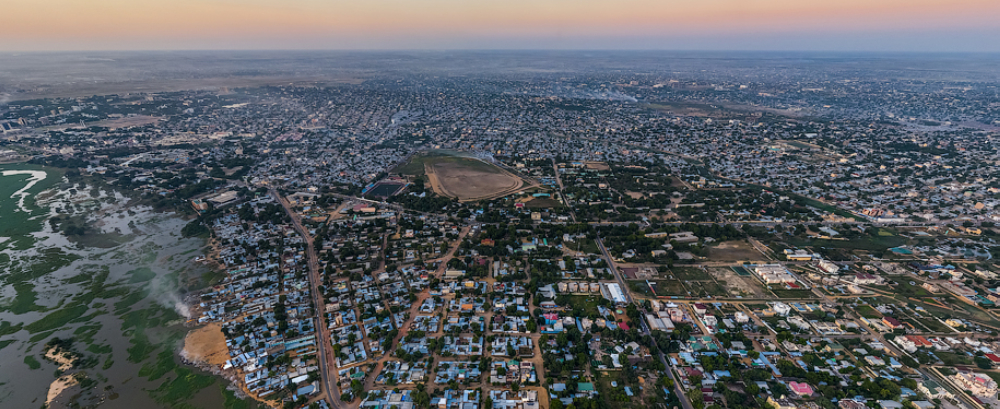
São Tomé and Príncipe
April 12, 2025
Cameroon
April 12, 2025Chad, a landlocked country in Central Africa, is endowed with a variety of mineral resources, although its mining sector remains relatively underdeveloped. The country’s economy has traditionally been dominated by agriculture and livestock, but in recent decades, oil production has become a significant contributor. Here’s an overview of the key mineral resources in Chad:
Key Mineral Resources
- Oil and Natural Gas:
- Overview: Oil is the most significant natural resource in Chad, and the country is a notable oil producer in Africa. Oil production began in earnest in the early 2000s and has since become a major source of revenue for the country.
- Major Oil Fields: The Doba Basin in southern Chad is the primary oil-producing region. Other significant areas include the Bongor Basin and Lake Chad Basin.
- Reserves: Chad has substantial proven oil reserves, with ongoing exploration activities potentially expanding these reserves. The oil sector is the largest contributor to the country’s GDP and export revenues.
- Uranium:
- Overview: Chad has known uranium deposits, particularly in the northern region of the country, near the border with Niger. Uranium exploration has taken place, but the sector is not yet fully developed.
- Reserves: The uranium reserves in Chad are still being explored, with potential for future development. The proximity of these deposits to Niger, a major uranium producer, suggests that Chad’s uranium resources could be significant.
- Gold:
- Overview: Gold deposits are found in various parts of Chad, particularly in the southwestern regions. Gold mining is primarily artisanal, although there is interest in expanding industrial-scale mining.
- Major Gold Mining Areas: Significant gold-producing areas include the regions of Tibesti, Guéra, and Mayo-Kebbi.
- Reserves: The gold reserves in Chad are modest, with most activities being artisanal. There is potential for further exploration and development, particularly in the Tibesti region.
- Salt:
- Overview: Salt has been an important resource in Chad for centuries, particularly in the northern regions around Lake Chad and the Tibesti Mountains. Salt extraction remains a vital economic activity in these areas.
- Reserves: The salt reserves in Chad are sufficient to meet local demand, with some potential for small-scale export.
- Limestone:
- Overview: Limestone deposits are present in Chad, particularly in the central and southern regions. Limestone is an essential raw material for the construction industry and cement production.
- Reserves: The limestone reserves in Chad are adequate to support local construction and infrastructure development.
- Natron (Sodium Carbonate):
- Overview: Natron, a naturally occurring form of sodium carbonate, is found in Chad, particularly around Lake Chad and in the Tibesti region. Natron has been historically important for local communities.
- Reserves: The natron reserves in Chad are significant, supporting both local use and some small-scale trade.
- Kaolin:
- Overview: Kaolin, a type of clay used in various industrial applications, is found in Chad. Kaolin deposits are mainly located in the southern part of the country.
- Reserves: The kaolin reserves in Chad are moderate, with potential for development to support local industries.
- Other Minerals:
- Tin: Small deposits of tin have been identified in Chad, particularly in the northern regions.
- Tantalum: There are reports of tantalum-bearing minerals in Chad, although these are not yet fully explored or developed.
Investment and Extraction Situation
- Oil Dominance: The oil sector is the dominant force in Chad’s mineral economy, with significant foreign investment and the government’s focus on maximizing oil revenues. The sector faces challenges such as fluctuating global oil prices, infrastructure needs, and the need for better governance and transparency.
- Artisanal and Small-Scale Mining (ASM): Artisanal and small-scale mining is prevalent in Chad, particularly in the gold and salt sectors. While ASM is a vital source of income for many communities, it also faces challenges such as lack of formalization, environmental degradation, and safety concerns. The government has expressed interest in formalizing and regulating ASM activities to improve sustainability and productivity.
- Infrastructure Challenges: Infrastructure development, particularly in transportation and energy supply, is crucial for the efficient extraction and export of mineral resources. Chad’s landlocked geography and underdeveloped infrastructure pose significant challenges to the growth of its mining sector.
- Environmental and Social Impact: Mining activities, particularly oil extraction, have significant environmental and social impacts in Chad. Issues such as land degradation, water pollution, and displacement of communities are major concerns. The government and international organizations are working to improve regulations and ensure that mining activities are conducted sustainably.


